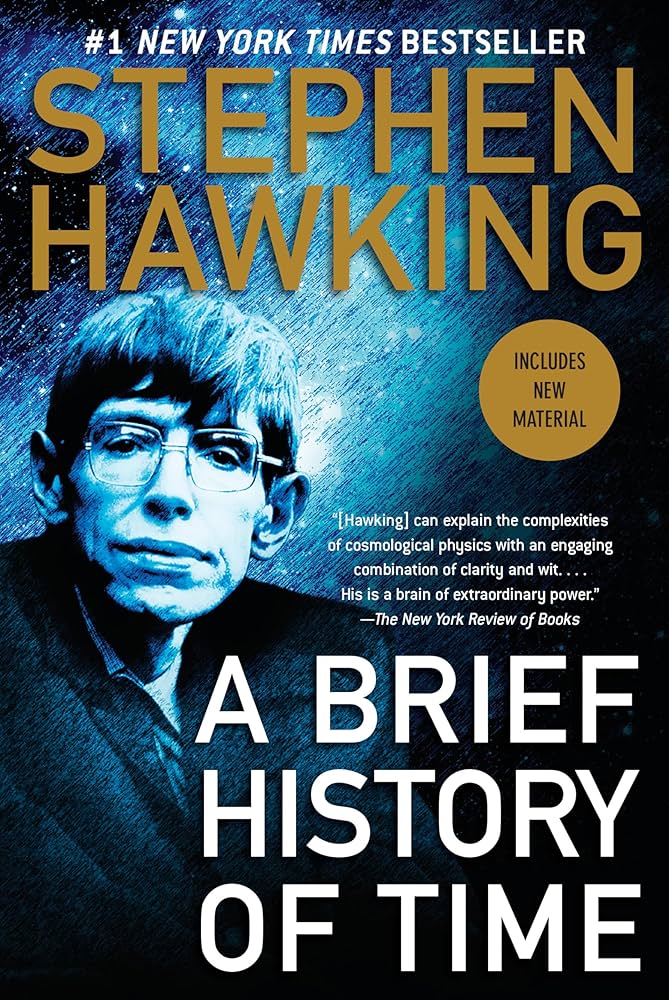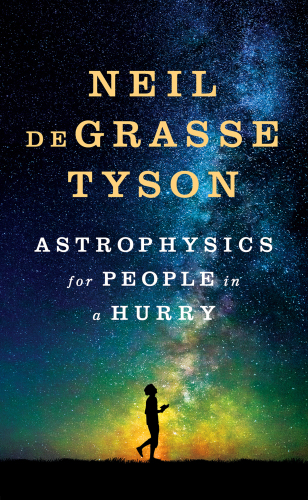The universe had a beginning—the Big Bang—and may have an end.
Hawking shows how the universe expanded from an infinitely dense point and continues evolving.

Book summary
by Stephen Hawking
From the Big Bang to Black Holes—demystifying the cosmos for everyone
Universe exploration from Big Bang to black holes
Topics
Read one cosmological concept per session, using Readever's AI highlighting to identify Hawking's key thought experiments and analogies. Focus on understanding the "why" behind each theory rather than memorizing details. The system will automatically surface the most powerful insights about black holes, the Big Bang, and the nature of time with targeted explanations.
Things to know before reading
Stephen Hawking's groundbreaking work makes complex cosmological concepts accessible to general readers, exploring the nature of time, the Big Bang, black holes, and the fundamental laws governing our universe. The book bridges the gap between specialized physics and public understanding, inviting everyone to contemplate the deepest questions about existence.
Hawking's revolutionary insights transform how we understand space, time, and the universe's ultimate fate.
Hawking shows how the universe expanded from an infinitely dense point and continues evolving.
Hawking radiation demonstrates that black holes slowly lose mass over time.
The arrow of time points from past to future due to entropy's relentless increase.
The ultimate goal of physics is a single framework explaining all forces.
Ready to continue? Launch the Readever reader and keep turning pages without paying a cent.
This summary reveals how Hawking's masterpiece demystifies complex cosmological theories, helping you grasp the fundamental nature of reality, time, and space. You'll discover how black holes work, why time flows in one direction, and what the Big Bang tells us about our cosmic origins—all explained with remarkable clarity and wit.
Key idea 1
Hawking shows how the universe expanded from an infinitely dense point and continues evolving.
Hawking explains that the universe began approximately 13.8 billion years ago from a singularity—a point of infinite density and temperature. Using Einstein's theory of general relativity, he demonstrates how space itself expanded, creating time as we know it. This concept fundamentally changed our understanding of cosmic origins and challenged previous notions of an eternal, unchanging universe.
Remember
Key idea 2
Hawking radiation demonstrates that black holes slowly lose mass over time.
Hawking's most famous discovery showed that black holes aren't the perfect traps they were thought to be. Due to quantum effects near the event horizon, they emit radiation and gradually lose mass. This "Hawking radiation" means black holes have a temperature and eventually evaporate completely, resolving the information paradox that troubled physicists for decades.
Remember
Key idea 3
The arrow of time points from past to future due to entropy's relentless increase.
Hawking explains why we remember the past but not the future through the concept of entropy—the measure of disorder in a system. The universe started in a highly ordered state and has been becoming more disordered ever since. This increasing entropy defines the direction of time and explains why certain processes, like breaking an egg, are irreversible.
Remember
Key idea 4
The ultimate goal of physics is a single framework explaining all forces.
Hawking discusses the ongoing quest for a "theory of everything" that would reconcile Einstein's theory of gravity with quantum mechanics. While both theories work brilliantly in their respective domains, they contradict each other when applied to extreme conditions like the Big Bang or black holes. Finding this unified theory remains one of physics' greatest challenges.
Remember
A Brief History of Time stands as one of the most influential popular science books ever written, selling over 25 million copies worldwide. Written while Hawking was Lucasian Professor of Mathematics at Cambridge University—the same position once held by Isaac Newton—the book represents a monumental achievement in making complex theoretical physics accessible to non-specialists.
Despite being diagnosed with ALS at age 21 and given just a few years to live, Hawking continued his groundbreaking research and writing for over five decades. His ability to communicate profound ideas with clarity and humor, combined with his remarkable personal story, made this book an international phenomenon that inspired generations to look up at the stars with wonder and curiosity.
Open Readever's reader to highlight passages, ask the AI companion questions, and keep exploring without paying a cent.
Hawking's writing combines intellectual rigor with remarkable accessibility. He masterfully guides readers through centuries of cosmological thought, from Aristotle to Einstein, while explaining cutting-edge concepts like string theory and imaginary time. The book's enduring appeal lies in its ability to make readers feel like they're participating in humanity's greatest intellectual adventure—the quest to understand the cosmos.
While some concepts remain challenging, Hawking's analogies and clear explanations make even the most abstract ideas comprehensible. His famous statement that "each equation I include would halve the sales" reflects his commitment to reaching the broadest possible audience without sacrificing scientific accuracy.
Anyone curious about the fundamental nature of the universe.
Science enthusiasts wanting to understand modern cosmology.
Readers interested in the intersection of physics and philosophy.
Students exploring careers in science and mathematics.
Stephen William Hawking (1942-2018) was one of the most brilliant theoretical physicists of our time. Despite being diagnosed with amyotrophic lateral sclerosis (ALS) at age 21 and gradually losing control of his body, he continued his groundbreaking research for over five decades. As Lucasian Professor of Mathematics at Cambridge University, he made fundamental contributions to our understanding of black holes, cosmology, and quantum gravity.
Hawking's work on black hole radiation and the singularity theorems established him as a leading figure in theoretical physics. His ability to communicate complex ideas to the public, combined with his remarkable personal story, made him one of science's most recognizable and inspirational figures. He received numerous honors, including the Presidential Medal of Freedom, and his legacy continues to inspire curiosity about the universe.

Charles Darwin
Groundbreaking theory of evolution by natural selection

Jared Diamond
Explains why civilizations developed differently across continents

Neil deGrasse Tyson
Universe essentials for busy readers in bite-sized chapters
Build your personalized reading stack
Download full-length ePubs in one click with personal cloud storage.
Blend AI-guided insights with tactile note-taking to accelerate reflection.
Follow curated reading journeys tailored to your goals and time budget.
Sync highlights across devices so lessons stick beyond the page.
Sign in to Readever to keep reading with AI guidance, instant summaries, and synced notes.
A Brief History of Time remains essential reading because it addresses humanity's most profound questions about existence while making cutting-edge science accessible to everyone. Hawking's masterpiece demonstrates that the universe is not only stranger than we imagine, but stranger than we can imagine—and that the quest to understand it is one of humanity's noblest endeavors.
The book's enduring message is that curiosity, not specialized knowledge, is the key to understanding our cosmic home. By inviting readers to contemplate the nature of time, space, and reality itself, Hawking created a work that continues to inspire wonder and scientific curiosity across generations.
A Brief History of Time continues to inspire because it addresses fundamental questions that have captivated humanity for millennia: Where did we come from? Why is the universe the way it is? What is the ultimate fate of everything? Hawking's genius lay in his ability to make these profound questions accessible while maintaining scientific rigor.
The book's enduring legacy lies in its demonstration that the universe is comprehensible through human reason and mathematics. Despite the complexity of modern physics, Hawking showed that with clear explanation and thoughtful analogies, anyone can grasp the essential concepts that shape our understanding of reality.
Hawking's work reminds us that science is not just a collection of facts, but a way of thinking—a method for asking better questions and seeking deeper understanding. His personal story of triumph over physical limitations serves as powerful testimony to the resilience of the human spirit and the boundless potential of the human mind.
Start reading A Brief History of Time for free and unlock personalized book journeys with Readever.